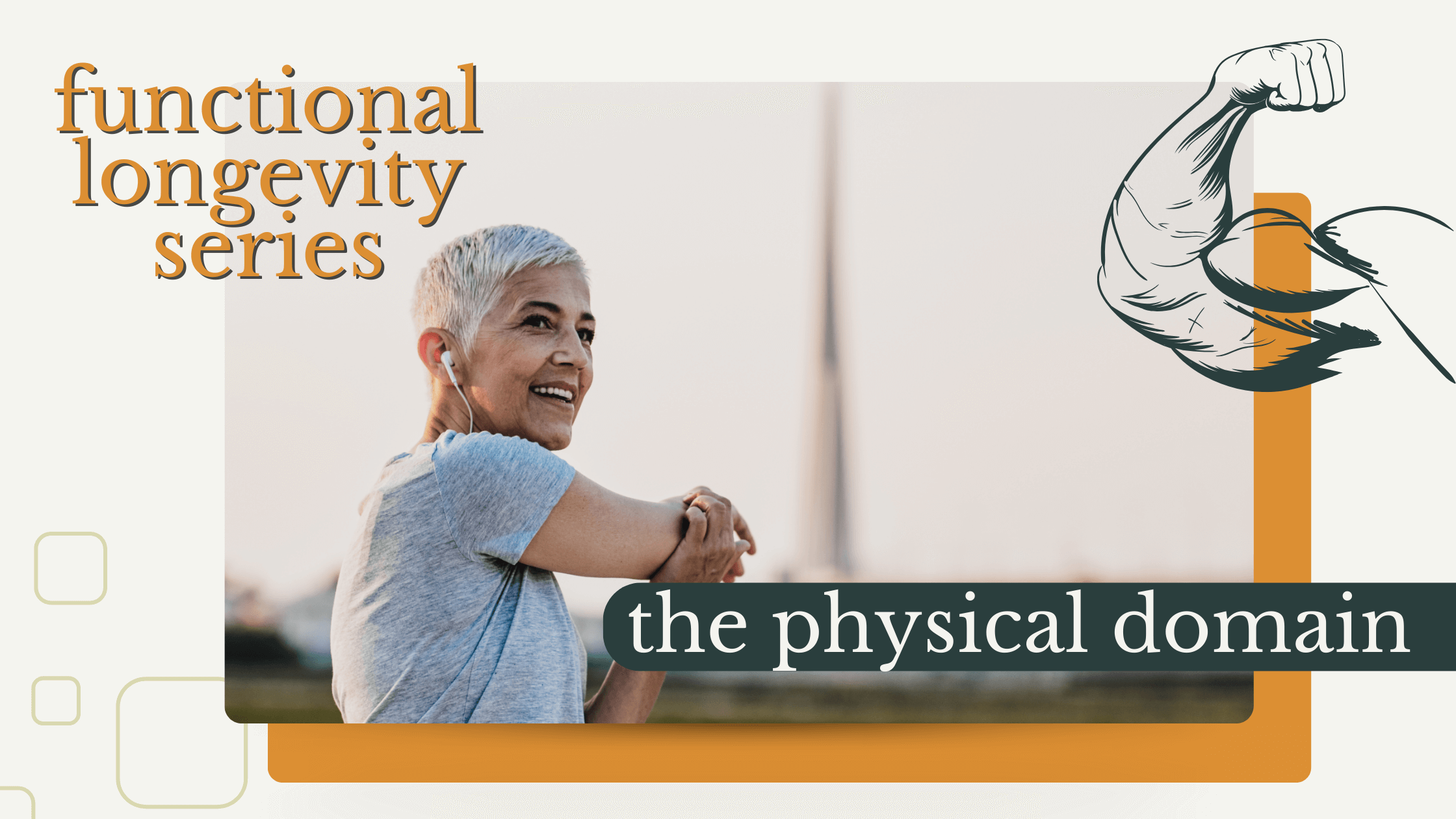Understanding Functional Longevity: The Physical Domain
Client Case Study & Our Approach
Jenna (names and identifiers altered to protect client privacy), came to us after a fresh anterior total hip replacement. At only 46 years old, she was rather young for this procedure but certainly not the youngest we have seen. She generally was in good health except for that pesky hip that had been hurting and dysfunctional for decades. With two teenagers and an active, athletic husband the whole family longed for her to be able to partake fully in their active and sporty lifestyle. It was this desire that would fuel her motivation to do the work needed to live the life she wanted.
After guiding her through the first phase of healing and rehabilitation with an emphasis on safe movement, strengthening, increasing hip mobility and basic walking exercises, she was ready for more ambitious endeavors.
At SOMA-IQ much emphasis is placed on movement analysis. Experience has taught us that small dysfunctions in our movement pattern, over time, tend to lead to more or less serious joint, muscle, nerve or tendon pathology. Vice versa, joint pain and dysfunction tends to lead to dysfunctional and inefficient movement patterns that will spread to other joints in the arms, legs and trunk, likely leading to pain and dysfunction in more remote parts of the body. Because of our focus on prevention and long-term functionality we want to catch small dysfunctions before they become a big problem.
After our interview, we therefore start with an in-depth movement and postural analysis followed by a body-part specific evaluation. We put our findings within the context of our client's short-and long-term goals and desires as well as their appetite for investing in their future. Together we decide on a plan of action that centers around the goal of maximizing the removal of limitations and enhancing physical abilities to serve the lifestyle the client strives for.
Given Jenna's desire to fully participate in her family's activities, we designed an ambitious plan with short- and long-term goals and sub-goals. These included transforming her ingrained limp, balancing her trunk musculature, restoring her posture, and building a perfect gait (walking) pattern, and -one of her special and challenging requests after an anterior total hip replacement - being able to sit cross-legged.
Being highly motivated to do her exercises daily with high precision, Jenna was able to achieve all the goals that we had set in approximately 6 months working 2-3 times a week together. She was able to walk with perfect posture and propulsion without any hint of the limp that had been with her for 2 decades. She could perform the most difficult core stabilizing exercises while being challenged. She could sit cross-legged safely. Her balancing ability had improved to above the norm for her age group. Her functional muscular strength was at or above the norm for her age and gender. And, she had a detailed plan and the foundation to continue improving her physical abilities in the future.
Jenna's case was, in a number of respects, non-typical. Here was a client with a history of decades of ingrained dysfunctional movement and compensations, fresh after a total hip replacement which presented us with some limitations to our approach. On the other hand, she was extremely motivated and therefore willing and able to consistently do the work required to (re)build the required neural pathways, strengthen what had become weak, mobilize what had become tight, and maintain a high awareness of her movement and postural habits.
What this case illustrates is how a comprehensive approach -not just focused on one replaced hip- and a motivated client, can lead to extra-ordinary outcomes that meet the client's short- and long-term goals and desires, and can build an adaptive body and mind for the ages -at any age. Having a clear vision of the life and lifestyle that she wanted to build, helped Jenna to keep her eyes on the prize and fueled her determination to do the work and succeed.

